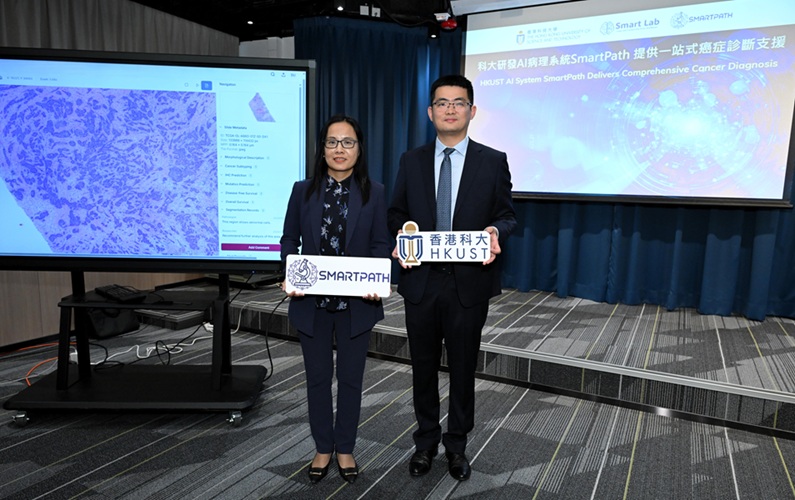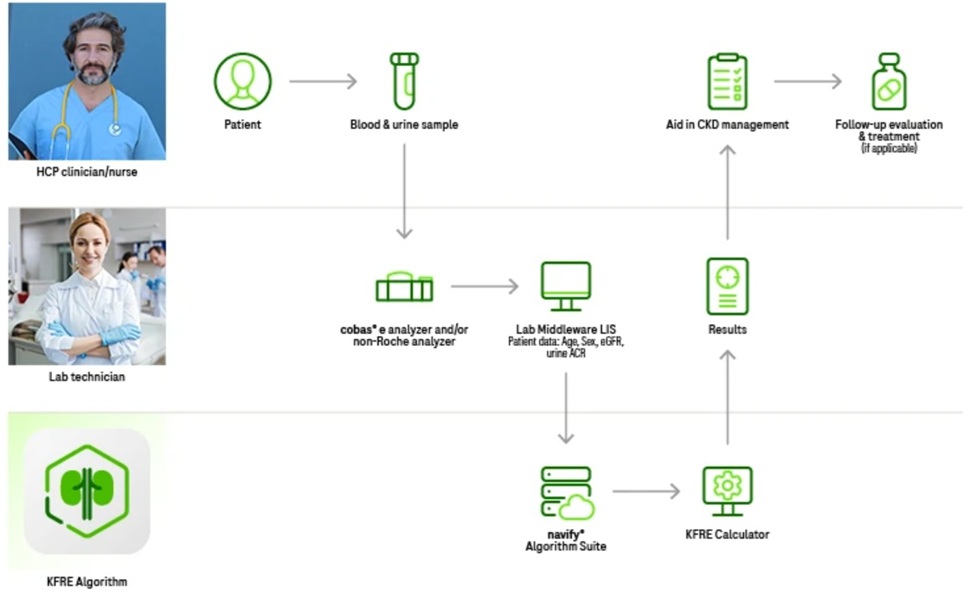Expanded Genetic Testing Leads to Additional Cardiomyopathy, Arrhythmia Diagnoses
|
By LabMedica International staff writers Posted on 17 Aug 2022 |

Genetic testing for nonischemic cardiomyopathies and inherited arrhythmias is recommended by cardiovascular societies to establish a genetic diagnosis, guide clinical management, and identify family members at risk.
However, many individuals with cardiomyopathies or arrhythmias do not receive genetic testing and therefore cannot benefit from gene-specific clinical management. Barriers to testing include limited clinician knowledge of genetics and results interpretation as well as real and perceived concerns regarding cost, insurance coverage, and low diagnostic yields.
Medical Scientists at the Feinberg School of Medicine (Chicago, IL, USA) and their colleagues performed a cohort study that involved a retrospective review of DNA sequencing results for cardiomyopathy- and arrhythmia-associated genes. The study included 4,782 patients with a suspected genetic cardiomyopathy or arrhythmia who were referred for genetic testing by 1,203 clinicians; all patients participated in a no-charge, sponsored genetic testing program for cases of suspected genetic cardiomyopathy and arrhythmia at a single testing site from July 12, 2019, through July 9, 2020.
Next-generation sequencing gene panels were used to simultaneously test for both sequence and exon-level copy number variants. Up to 150 genes associated with cardiomyopathies or arrhythmias were sequenced. The primary panel included 67 genes with established associations with cardiomyopathies and arrhythmias. Four optional add-on panels that included genes with preliminary associations with cardiomyopathies and arrhythmias could be ordered initially or after receipt of initial results without charge. Each gene was targeted with oligonucleotide baits (Agilent Technologies, Santa Clara, CA, USA; Roche, Pleasanton, CA, USA; Integrated DNA Technologies, Coralville, IA, USA) that were designed to capture exons and 10 bases of flanking intronic sequences.
The investigators reported that among 4,782 patients (mean age, 40.5± 21.3 years; 2,551 male [53.3%]) who received genetic testing, a positive result (molecular diagnosis) was confirmed in 954 of 4,782 patients (19.9%). Of those, 630 patients with positive results (66.0%) had the potential to inform clinical management associated with adverse clinical outcomes, increased arrhythmia risk, or targeted therapies. Combined cardiomyopathy and arrhythmia gene panel testing identified clinically relevant variants for 15 patients suspected of having a genetic cardiomyopathy or arrhythmia. If only patients with a high suspicion of genetic cardiomyopathy or arrhythmia had been tested, at least 137 positive results (14.4%) would have been missed.
If testing had been restricted to panels associated with the clinician-provided diagnostic indications, 75/689 positive results (10.9%) would have been missed; 27/75 findings (36.0%) gained through combined testing involved a cardiomyopathy indication with an arrhythmia genetic finding or vice versa. Cascade testing of family members yielded 402 of 958 positive results (42.0%). Patients referred for arrhythmogenic cardiomyopathy had the lowest rate of variants of uncertain significance (81/176 patients [46.0%]), and patients referred for catecholaminergic polymorphic ventricular tachycardia had the highest rate (48/76 patients [63.2%]).
Elizabeth M. McNally, MD, PhD, Professor of Genetic Medicine and senior author of the study said, “Notably, this study found a 10.9% gain in genetic diagnoses that would have been missed if testing had been limited to genes associated with a single cardiomyopathy or arrhythmia subtype.”
The authors concluded that comprehensive genetic testing for cardiomyopathies and arrhythmias revealed diagnoses that would have been missed by disease-specific testing. In addition, comprehensive testing provided diagnostic and prognostic information that could have potentially changed management and monitoring strategies for patients and their family members. They added that the benefits of identifying additional cases outweighs the risks posed by detecting variants of uncertain significance, which were found in 51.2% of their cohort. The study was published on August 10, 2022 in the journal JAMA Cardiology.
Related Links:
Feinberg School of Medicine
Agilent Technologies
Roche
Integrated DNA Technologies
Latest Molecular Diagnostics News
- Genomic Test Could Reduce Lymph Node Biopsy Surgery in Melanoma Patients
- Urine Test Could Replace Painful Kidney Biopsies for Lupus Patients
- Blood Test Guides Post-Surgical Immunotherapy for Muscle-Invasive Bladder Cancer
- Mitochondrial DNA Mutations from Kidney Stressors Could Predict Future Organ Decline
- Blood Test Could Predict Bariatric Surgery Outcomes in Teenagers
- ctDNA Blood Test to Help Personalize Postsurgical Colon Cancer Treatment
- AI Powered Blood Test Predicts Suicide Risk in Bipolar Patients
- DNA Sensor Enables Molecular Detection from Single Blood Drop
- DNA-Powered Test Accurately Detects E. Coli Lookalike Bacteria
- World’s Fastest DNA Sequencing Technique to Revolutionize NICU Genomic Care
- Blood Test Uses Cell-Free DNA to Detect ALS Faster and More Accurately
- Multi-Cancer Early Detection Blood Test Increases Cancer Detection
- Portable Label-Free Device Tracks Alzheimer's Disease in Real Time
- Liquid Biopsy Test Enables Early Detection of ICI-Related Myocarditis
- Rapid POC Diagnostic Test Detects Asymptomatic Malaria Cases
- Improved DNA Sequencing Tool Uncovers Hidden Mutations Driving Cancer
Channels
Clinical Chemistry
view channel
VOCs Show Promise for Early Multi-Cancer Detection
Early cancer detection is critical to improving survival rates, but most current screening methods focus on individual cancer types and often involve invasive procedures. This makes it difficult to identify... Read more
Portable Raman Spectroscopy Offers Cost-Effective Kidney Disease Diagnosis at POC
Kidney disease is typically diagnosed through blood or urine tests, often when patients present with symptoms such as blood in urine, shortness of breath, or weight loss. While these tests are common,... Read moreHematology
view channel
Viscoelastic Testing Could Improve Treatment of Maternal Hemorrhage
Postpartum hemorrhage, severe bleeding after childbirth, remains one of the leading causes of maternal mortality worldwide, yet many of these deaths are preventable. Standard care can be hindered by delays... Read more
Pioneering Model Measures Radiation Exposure in Blood for Precise Cancer Treatments
Scientists have long focused on protecting organs near tumors during radiotherapy, but blood — a vital, circulating tissue — has largely been excluded from dose calculations. Each blood cell passing through... Read more
Platelets Could Improve Early and Minimally Invasive Detection of Cancer
Platelets are widely recognized for their role in blood clotting and scab formation, but they also play a crucial role in immune defense by detecting pathogens and recruiting immune cells.... Read more
Portable and Disposable Device Obtains Platelet-Rich Plasma Without Complex Equipment
Platelet-rich plasma (PRP) plays a crucial role in regenerative medicine due to its ability to accelerate healing and repair tissue. However, obtaining PRP traditionally requires expensive centrifugation... Read moreImmunology
view channel
Blood-Based Liquid Biopsy Model Analyzes Immunotherapy Effectiveness
Immunotherapy has revolutionized cancer care by harnessing the immune system to fight tumors, yet predicting who will benefit remains a major challenge. Many patients undergo costly and taxing treatment... Read more
Signature Genes Predict T-Cell Expansion in Cancer Immunotherapy
Modern cancer immunotherapies rely on the ability of CD8⁺ T cells to rapidly multiply within tumors, generating the immune force needed to eliminate cancer cells. However, the biological triggers behind... Read moreMicrobiology
view channel
Fast Noninvasive Bedside Test Uses Sugar Fingerprint to Detect Fungal Infections
Candida bloodstream infections are a growing global health threat, causing an estimated 6 million cases and 3.8 million deaths annually. Hospitals are particularly vulnerable, as weakened patients after... Read more
Rapid Sepsis Diagnostic Device to Enable Personalized Critical Care for ICU Patients
Sepsis is a life-threatening condition that occurs when the body’s response to infection spirals out of control, damaging organs and leading to critical illness. Patients often arrive at intensive care... Read morePathology
view channel
Tears Offer Noninvasive Alternative for Diagnosing Neurodegenerative Diseases
Diagnosing and monitoring eye and neurodegenerative diseases often requires invasive procedures to access ocular fluids. Ocular fluids like aqueous humor and vitreous humor contain valuable molecular information... Read more
AI-Powered Method Combines Blood Data to Accurately Measure Biological Age
Chronological age tells us how many years we’ve lived, but not how quickly our bodies are ageing. Some people stay healthy well into their 80s or 90s, while others experience decline much earlier.... Read moreTechnology
view channel
Embedded GPU Platform Enables Rapid Blood Profiling for POC Diagnostics
Blood tests remain a cornerstone of medical diagnostics, but traditional imaging and analysis methods can be slow, costly, and reliant on dyes or contrast agents. Now, scientists have developed a real-time,... Read more
Viral Biosensor Test Simultaneously Detects Hepatitis and HIV
Globally, over 300 million people live with Hepatitis B and C, and 40 million with HIV, according to WHO estimates. Diagnosing bloodborne viruses such as HIV and Hepatitis B and C remains challenging in... Read moreIndustry
view channel
Advanced Instruments Merged Under Nova Biomedical Name
Advanced Instruments (Norwood, MA, USA) and Nova Biomedical (Waltham, MA, USA) are now officially doing business under a single, unified brand. This transformation is expected to deliver greater value... Read more





















